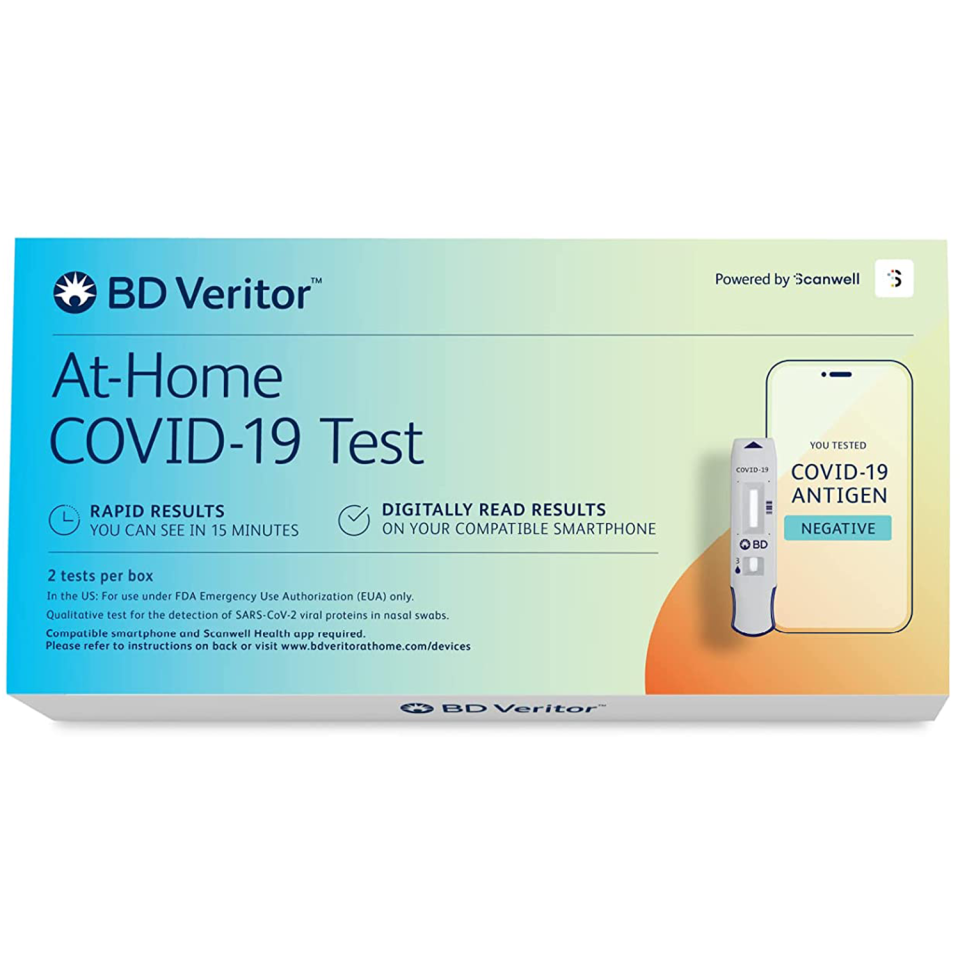6 At-Home COVID-19 Tests Approved for Kids and Adults
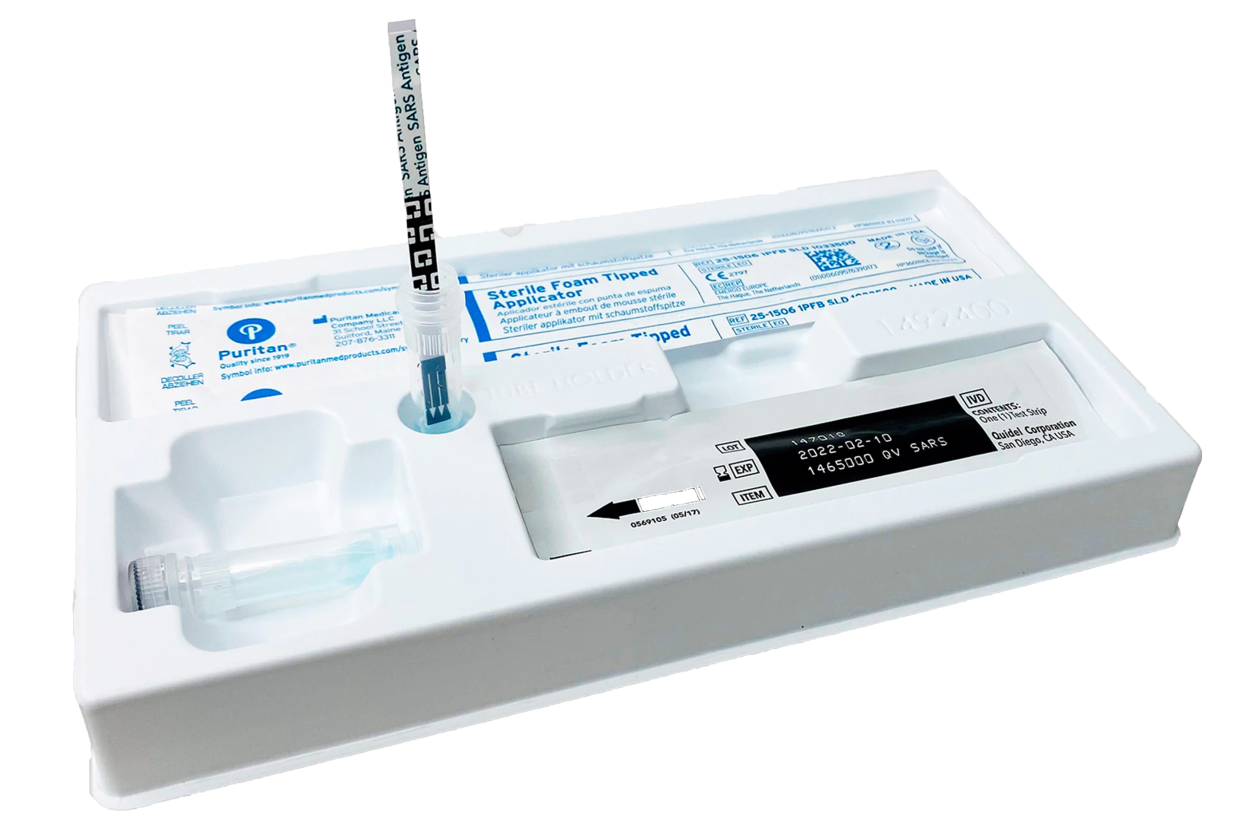
CVS
parents - 23.99 Available at Walgreens
parents - 17.98 Available at Amazon
parents - 9.99 Available at CVS
parents - 23.99 Available at CVS
parents - 29.99 Available at Walmart
parents - 33.75 Available at Amazon
As of mid-January, every household in the U.S. can receive four free at-home COVID-19 tests just by filling out this form with the U.S. Postal Service. But as most of us who have been living through the pandemic know, that's probably not going to be enough. With the Omicron variant still infecting record numbers of people and the continued uncertainty of what may come after that, it seems like a pretty good idea to have some rapid at-home tests (a.k.a. antigen tests) on hand for any time you may have been exposed or plan to meet with groups of people. And many parents want to know: Which at-home COVID test is best for kids and families to use?
At the moment, that choice may be out of your hands, instead determined by whether there are any rapid tests available at local or online pharmacies. Since President Joe Biden mandated that private insurers must cover at-home COVID tests, you should check your plan's website to see if it covers kits directly when you buy them at a preferred pharmacy. But according to the Kaiser Family Foundation, most insurance companies are instead asking customers to buy kits on their own and submit receipts for reimbursement. If that's the case, you should be able to buy any of the kits listed below, all of which have been given Emergency Use Authorization (EUA) by the Food and Drug Administration. But first, you may still have some more questions.
When Should I Give My Child an At-Home COVID Test?
Even if testing kits are free and readily available, you don't need to be swabbing your kids all that frequently without cause, Denise Scott, MD, an Oklahoma-based pediatrician with JustAnswer, tells Parents.
"The purpose of the test is primarily for testing after exposure or for someone with symptoms," Dr. Scott says. "Testing can also be done prior to an indoor group gathering, for travel purposes, or after a high-risk activity such as being in a crowd, but testing should be done for a specific reason, not to monitor randomly."
Dr. Scott explains that exposure is still defined as "being within 6 feet for a cumulative time of at least 15 minutes over a 24-hour period to an individual with a confirmed or probable Sars-CoV-2 [COVID-19] case from two days prior to the onset of symptoms until that person isolates." But she also adds that the Centers for Disease Control and Prevention defines exposure for students in classrooms as within 3 feet for at least 15 minutes (cumulative over 24 hours) of an infected person or within 6 feet if at least one party (either the infected or uninfected person) was unmasked or incorrectly wearing their mask.
What Should I Look for in a COVID Test for Kids?
"The gold standard for testing is the molecular PCR test, which is the most sensitive, specific, and reliable for symptomatic or asymptomatic patients," Dr. Scott says of the slower test type, which must be processed in a lab. A PCR test is less likely to give a false negative for someone who has no symptoms, and it's also the only type of test approved for children under 2.
But there are a lot of advantages to using a rapid at-home test kit. "These kits detect proteins or antigens from the outer part of the Sars-CoV-2 virus and are essentially a home version of the antigen tests used in clinics," Dr. Scott explains. "These tests are reliable for diagnosis in someone with symptoms. The antigen tests are not as sensitive as the molecular tests but are less expensive and give a rapid result."
When shopping for a rapid antigen test for a child, Dr. Scott says to read the descriptions carefully to be sure that the test has been approved for use in children ages 2 and older and to see whether it's indicated only for testing someone with symptoms (diagnostic) or is also approved for someone without symptoms (screening).
"Many require two tests, 36 hours apart if the first is negative, so a kit that has two tests in one box is best," Dr. Scott advises. "Also be sure that it is an all-in-one test kit and not a collection kit in which the specimen is obtained at home then sent to the laboratory for [PCR] testing."
Of the antigen tests on the FDA's EUA list, the only real differences between them are minor ones. They vary in the method of adding the swab sample to the testing agent, the time to wait for the results (all 30 minutes or less), and the way you will read the results (lines on the test or via an app).
Below are the at-home COVID tests approved for children that are easiest to buy and to use.
BinaxNow COVID-19 Antigen Rapid Self-Test at Home Kit
This test has been one of the most widely available, and its ease of use makes it even more popular. After placing six drops of the solution on a test card, you insert the used nasal swab into a slot, seal it shut, and wait 15 minutes to see whether there is one line (negative) or two (positive). You only need one test for use in someone symptomatic, but if an asymptomatic person tests negative, they should test again within three days, with 36 hours between tests.
To buy: BinaxNow COVID-19 Antigen Rapid Self-Test at Home Kit (2 tests), $23.99; walgreens.com, cvs.com.
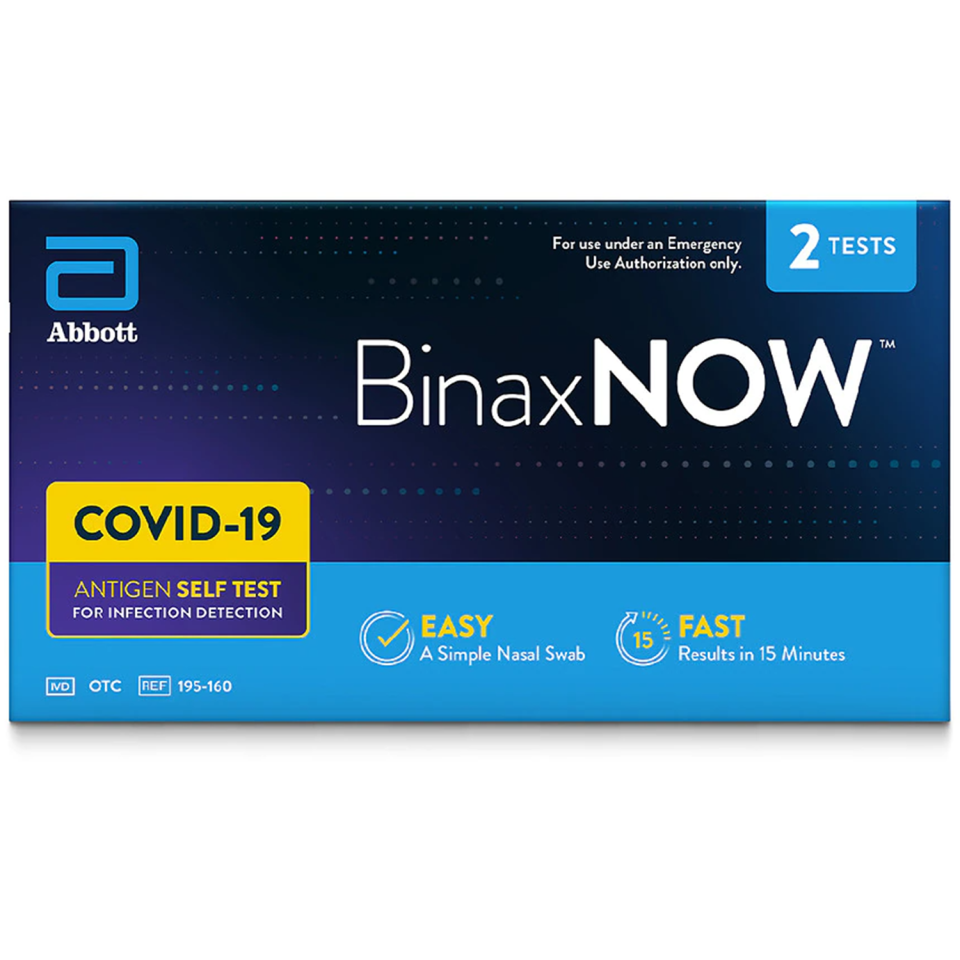
iHealth COVID-19 Antigen Rapid Test
The New York City school system has been using these inexpensive tests as part of its test-to-stay policy in 2022, so it's got a stamp of approval from more than just the FDA. For this test, you insert the used swab into a tube of solution, stir it around 15 times, and then pour three drops onto the test stick. After 15 minutes, lines under both the C and T indicate a positive result. If an asymptomatic person tests negative, they should take a second test between 24 and 48 hours later. You do not need an app to read the results; however, there is an app associated with the test that groups or organizations can use to track members' results.
To buy: iHealth COVID-19 Antigen Rapid Test (2 tests), $17.98; amazon.com.
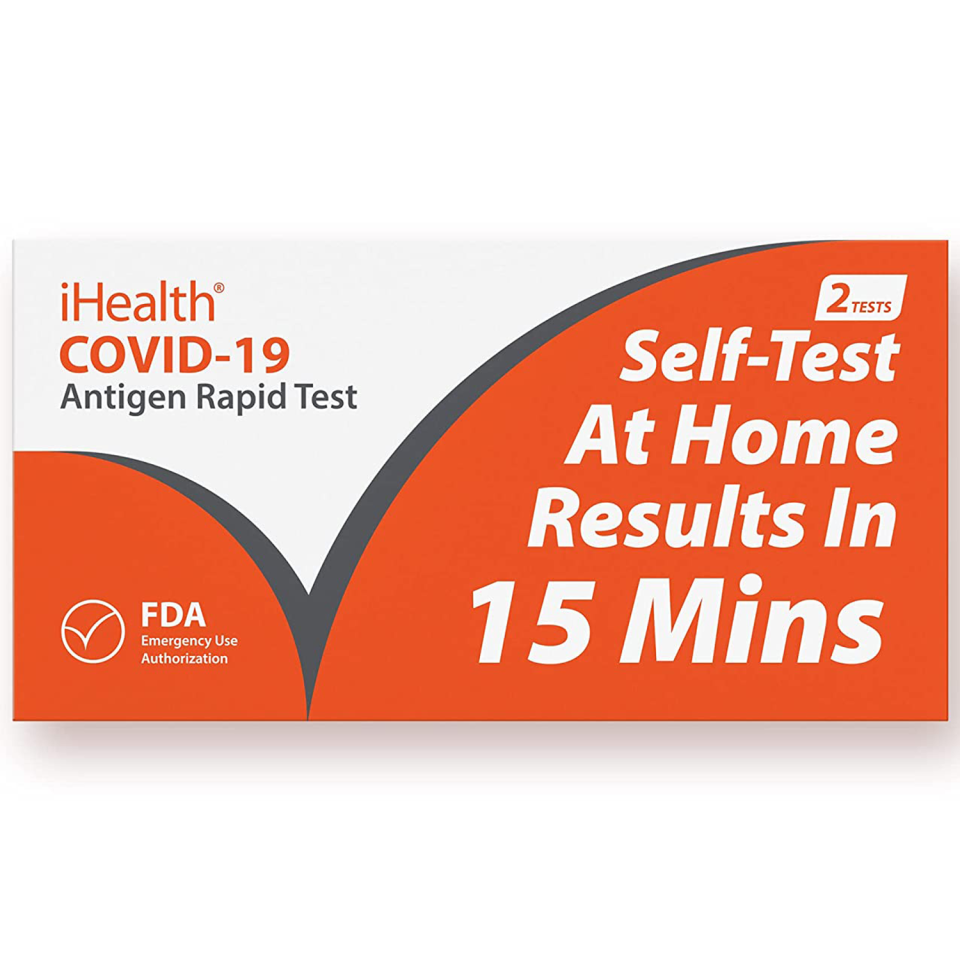
FlowFlex COVID-19 Antigen Home Test
This test uses a similar kind of tube/dropper and test stick as iHealth, and New York City schools have also sent these home with students for test-to-stay. You need to swirl the swab in the tube for 30 seconds and then rotate the swab five times while squeezing the tube before discarding the swab and placing four drops of solution on the test stick. There's a 15-minute wait for results. You only get one test per kit, so purchase more than one if you'll be testing an asymptomatic person.
To buy: FlowFlex COVID-19 Antigen Home Test (1 test), $9.99; cvs.com, walgreens.com.
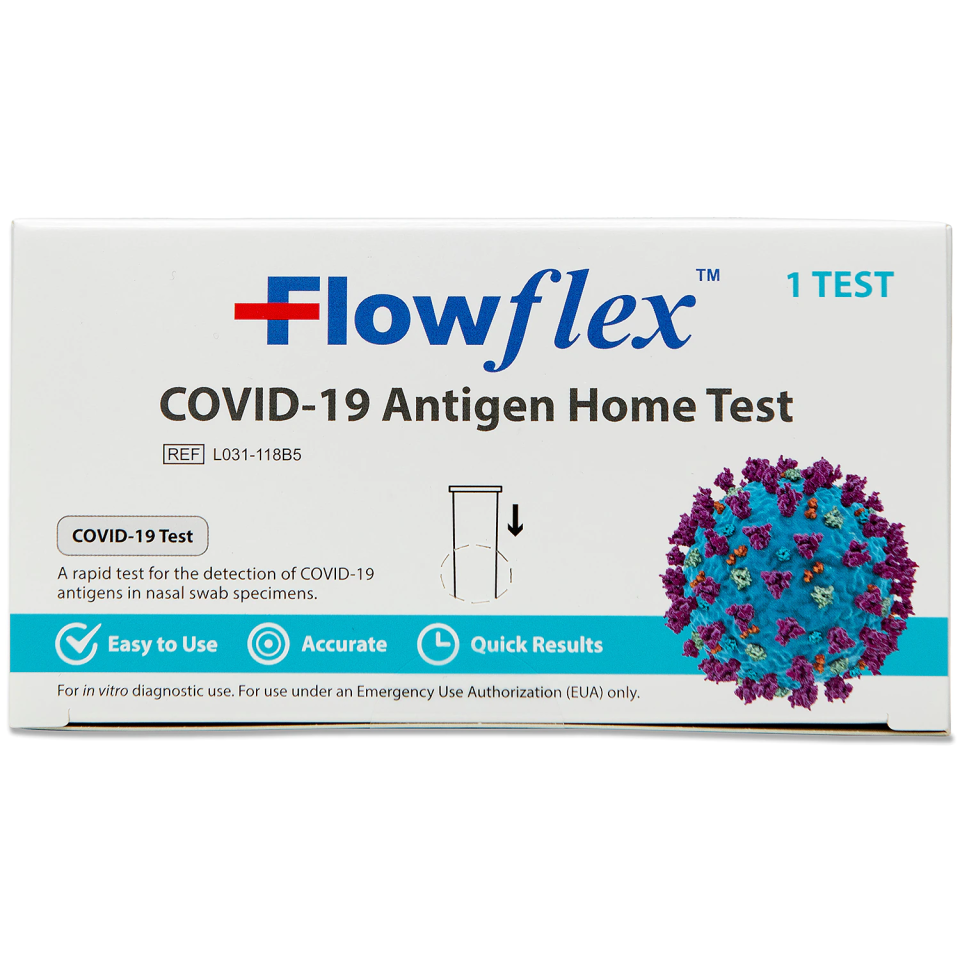
QuickVue At-Home OTC COVID-19
The instructions for this antigen test vary slightly from the others. After swabbing the nostrils, you have to stir it into the tube three or four times, then leave it in for one minute. Next, squeeze off any extra liquid from the swab before tossing it. Place a test strip into the tube (with arrows pointed down) for 10 minutes. Finally, lay the strip flat and read results right away, as they'll be invalid after five minutes. Both pink and blue lines indicate a positive result, while a blue line only is negative. As with the others, test again in 24-48 hours if the result is negative.
To buy: QuickVue At-Home OTC COVID-19 (2 tests), $23.99; cvs.com; walgreens.com.
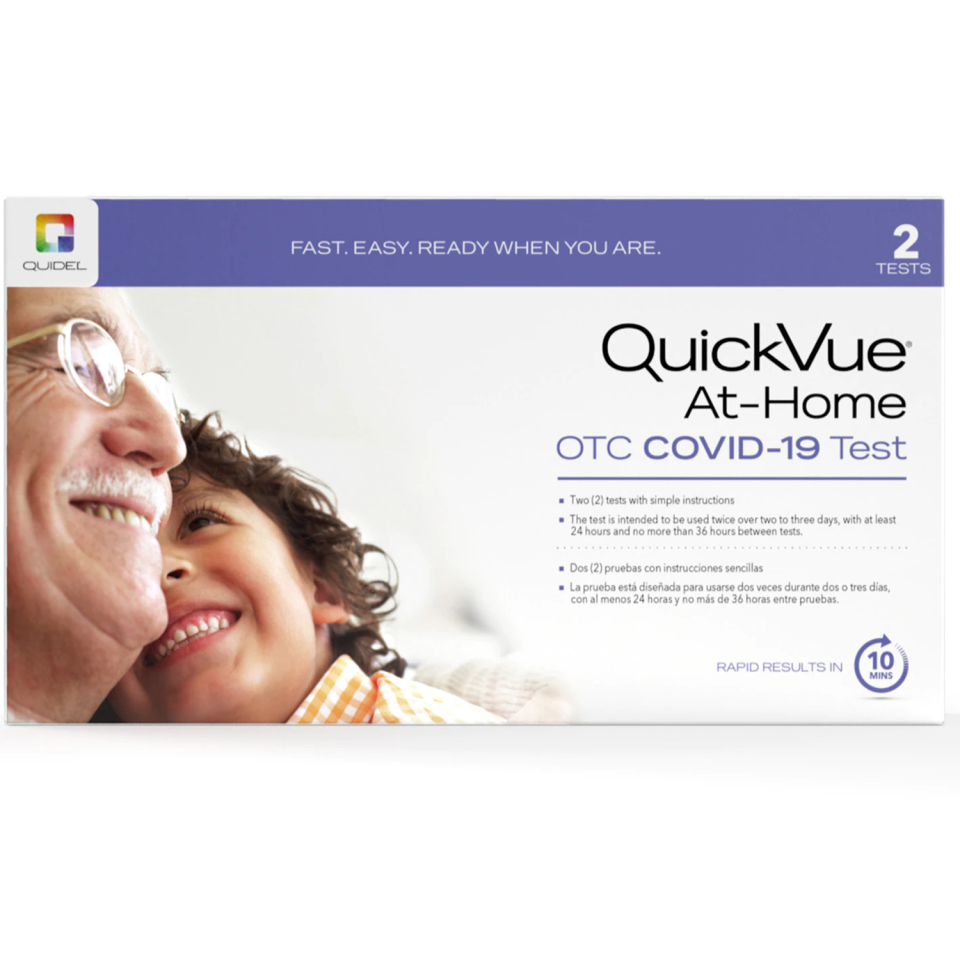
On/Go COVID-19 Antigen Self-Test
If the above tests feel too low-tech for you to trust them, you can try one of the tests that link up with an app to take you through the process and help you interpret your results. The test itself is similar to others, with the added assistance of a 15-second timer for your nasal swabbing. You rotate the swab five times in the tube, squeeze out the excess liquid, tap the tube to mix, and then pour three drops into the test cassette. You'll then set a timer on the app for 10 minutes, and per the instructions, you shouldn't leave the app (so no scrolling through TikTok). When the alarm rings, take a photo of the cassette, and the app will tell you the results. While the computerized accuracy to read those little lines is convenient, some may be wary of the amount of personal information the app requires before conducting the test.
To buy: On/Go COVID-19 Antigen Self-Test (2 tests), $23.99–$29.99; walmart.com, walgreens.com.
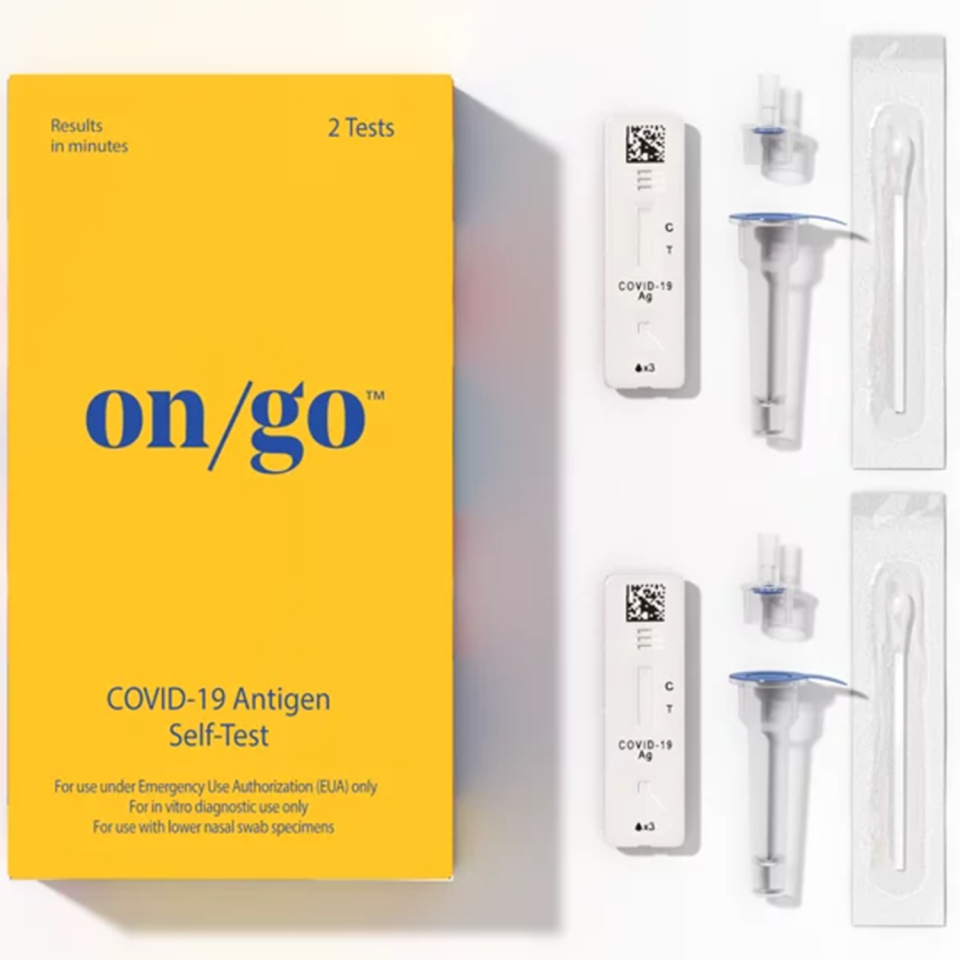
BD Veritor At-Home COVID-19 Digital Test Kit
Parents was given a free sample of this test to use in December. It is another app-based antigen test with the same basic instructions, which you receive via video on the app, and it's about $10 more expensive than its competitors. Before you buy this kit, check whether your phone is compatible with the app, because you absolutely can't use the test without it. When we tested this the first time, we switched over to a different app momentarily and somehow missed the 15-minute timer—and even though we were just a minute late, the app deemed the test results invalid. The second time, we followed the instructions more closely, and everything worked out fine.
To buy: BD Veritor At-Home COVID-19 Digital Test Kit, $33.75; amazon.com.
